There's no one right project management strategy. But what remains core to the role and profession is that project managers have a big job.
It takes a lot of planning and coordination to align project team members, stakeholders, and, if you work in an agency setting, clients. Let's talk about some strategies to set yourself and your team up for success.
What Are Project Management Strategies?
Project management strategies are systematic approaches or methods used to plan, execute, and complete a project. These strategies help ensure that the project goals are achieved efficiently and effectively.
15 Project Management Strategies For Project Success
Here are some strategies to add to your project management tool kit.
1. Choose the right methodology
Waterfall, agile, Scrum, Kanban, lean, and eXtreme programming are all popular methodologies used to manage projects today. When thinking about the right project methodology, consider the following:
- The project team’s roles and skill sets
- The team’s experience working together and working on this type of project
- The expectations of your clients, stakeholders, and executive sponsors
- The timeline and budget for the project
- What the team knows at kickoff and what still needs to be defined or refined
- Any workflows within the organization that are already in place
- Dependencies
- What technology is available to the team for project management and execution (project management software, design and development tools, other software)
- The project’s goals
2. Hold a proper kickoff
Believe it or not, a good kickoff meeting (with a relevant agenda) can make or break a project. This is the opportunity to get the project team and all the stakeholders aligned.
It’s the place in the project where you can discuss the overall plan and how you’ll communicate and mitigate risks. It’s also a chance to gain clarity on aspects of the project that may not be well fleshed out, as well as where the most important milestones are along the critical path.
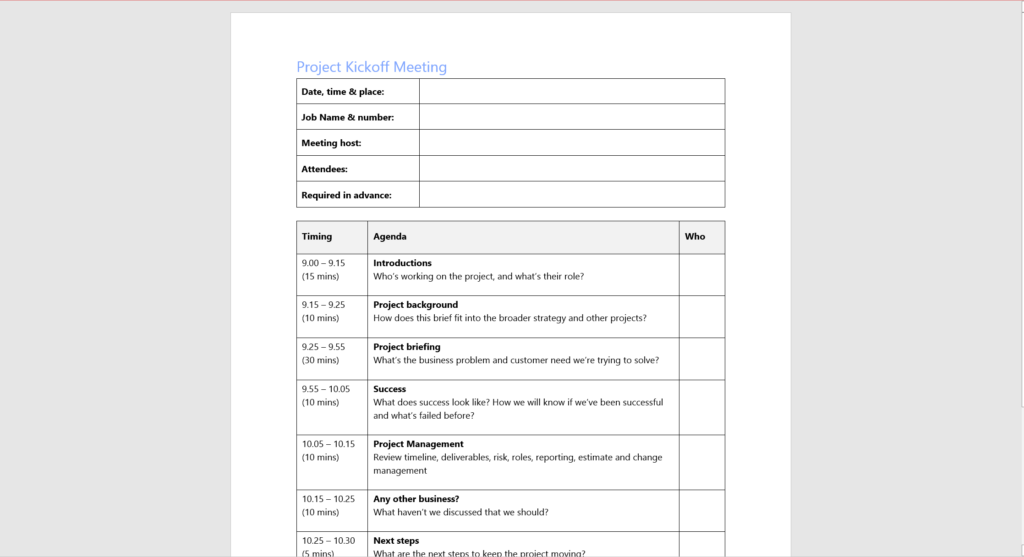
3. Establish working agreements
While there are a lot of business objectives that need to be accomplished in a kickoff, it’s also a time to start forming team culture and norms.
If you’ve never established working agreements before, these are promises that everyone on the team will make to each other to keep the project moving forward. This could include things like promising to ask questions when things aren’t clear, treating everyone with respect, and sharing administrative responsibilities like note-taking and scheduling.

4. Select the right software
A good first step in software selection is to define your requirements. Do you need Kanban boards, Gantt charts, a formal work breakdown structure (WBS), project templates, or the ability to develop a backlog and plan sprints as you would in an agile project?
Should your software help with project scheduling and resource management or have integrations to support communication and time tracking?
5. Create a project plan
Creating a project plan isn’t just an exercise in administrative documentation. It helps break down big projects into individual tasks and gives team members and stakeholders an idea of what will happen and when.
Remember that creating a strategic project plan is not a one-time activity during the life cycle of a project. It’s an iterative process, and you might need to update the plan after a sprint, specific milestone, or even weekly if things are constantly changing in your project.
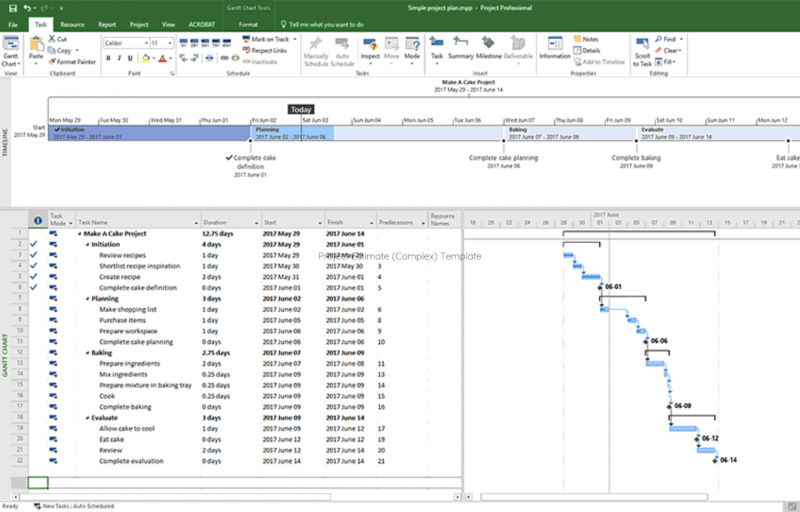
6. Provide status updates
Status updates aren’t just a way to cover your you-know-what. They’re great places to celebrate wins, highlight project needs, and share project details with stakeholders who aren’t as involved in the day-to-day tasks.
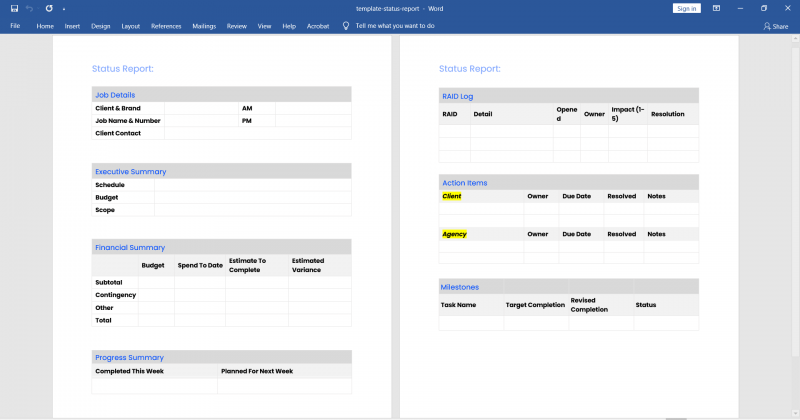
7. Close a project the right way
One of the first things you should do before you head off to the next project is to hold a retrospective or post-mortem. This meeting should focus on two areas.
First, analyze the hard data around completing the project, including how the project requirements were met, the budget utilization, task management and completion, and any other data you may have gathered throughout the entire project.
The second part of the meeting is less data-driven, but equally important. Consider things like:
- Did the project go smoothly, or did tight deadlines and a small budget make it more stressful?
- Was the team the right one, or were there other roles that would have been nice to have?
- How was the communication with the team and other stakeholders?
- What skills do people on the team feel they want to continue to work on?
- What lessons did we learn that we as a team want to take into our next project?
8. Develop a risk management plan
By identifying and assessing potential risks early and developing targeted mitigation strategies, you can proactively address uncertainties that might derail your project. This approach not only assigns clear ownership for monitoring risks, but also creates a plan to address risks when they do arise.
9. Keep stakeholders engaged
Understanding and managing diverse expectation can help reduce the risk of late-stage surprises. By mapping stakeholders and tailoring communication to their needs, you can help ensure consistent alignment and support.
10. Optimize resource allocation
Keeping a close eye on resource management helps dodge issues like overload, uneven workloads, and burnout.

11. Implement quality management processes
Establishing quality standards and build in time for assessments. Monitoring this throughout the project can help minimize rework and keep errors from compounding.
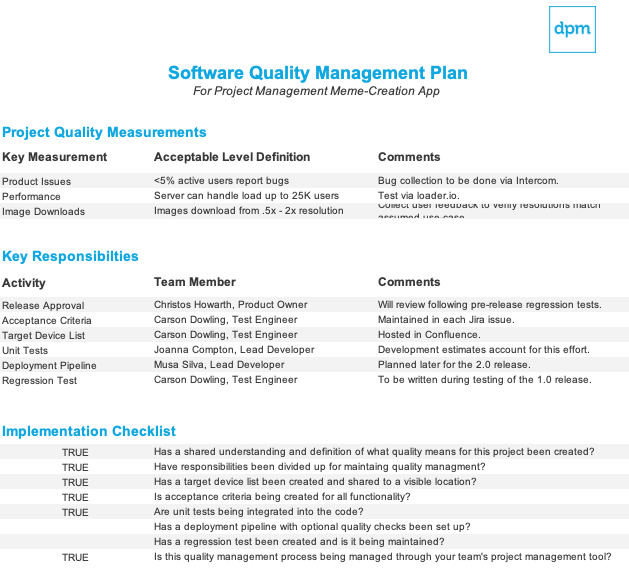
12. Establish a change management framework
Creating a structured process for managing change requests help integrate changes without significant disruptions. This way you can account for the impact on time, scope, and budget before committing to a change.
13. Foster continuous improvement
Engage in post-project reviews and share insights organization-wide. This helps reduce the likelihood of repeating past mistakes.
14. Create an effective communication plan
A well-crafted communication plan ensures that all stakeholders are kept informed and engaged, reducing misunderstandings and the need for frequent clarification meetings.
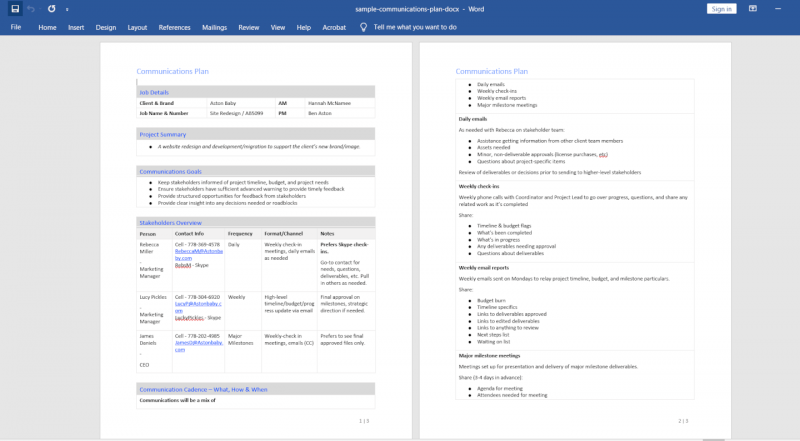
15. Enhance time management and scheduling
By breaking down the project into manageable tasks with clear deadlines and using scheduling tools for tracking, project managers can effectively manage time, a critical aspect of project success.
What's Next?
Just getting started in project management? Check out our expert-created Mastering Digital Project Management course. It covers the entire project life cycle from start to finish and takes you through several common project methodologies so you can feel comfortable and confident in running your projects.


